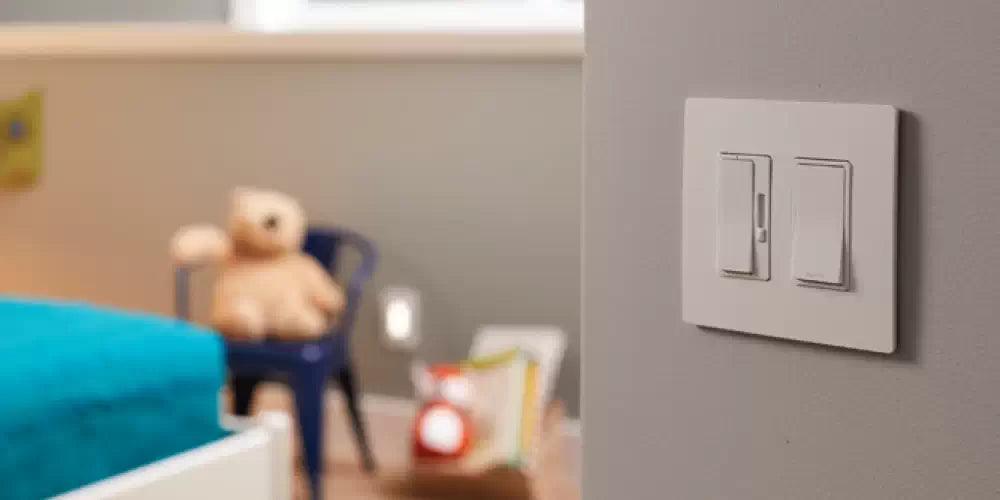Wall plates and outlet covers are vital elements in any room, providing a blend of functionality and aesthetic appeal. With an array of styles, materials, colors, and sizes available, choosing the right wall plate can significantly influence the overall décor of your space.
Understanding Wall Plates
Wall plates, otherwise known as switch plates, are not merely decorative elements. They serve a crucial role in protecting your home’s electrical wiring, thus ensuring safety while adding a subtle touch of elegance to your room.
Purpose of Wall Plates
The primary function of wall plates is to cover the electrical outlets and light switches in your home, keeping the wiring hidden and out of reach. Besides offering protection, they also contribute to the room's aesthetic, complementing the walls, light fixtures, cabinetry, and other room features.
Types of Wall Plates
When selecting wall plates for your home, it's important to consider the various styles available. Each style serves a specific purpose and can contribute differently to your room's décor.
Screwless Wall Plates
Screwless wall plates are modern, chic, and easy to install. They offer a more elevated look with minimal effort. One of the advantages of screwless cover plates is the safety they provide. For example, children may find screws inviting and potentially remove the wall plate, exposing them to dangerous electrical elements. With screwless switch plates, this risk is eliminated.
Toggle Wall Plates
If your home features a toggle-type switch, you will require toggle wall plates. These plates are designed to fit perfectly over toggle switches, providing a neat and clean appearance.
Cable Management Wall Plates
Cable management wall plates are ideal for creating a sleek-looking entertainment center. These plates allow you to hide unsightly plugs and cords that might hamper the aesthetic appeal of your entertainment area.
Media/Data/Phone Wall Plates
These wall plates are designed to house data ports for internet, phone, cable, etc. They come in various options, including screwless, decorator inserts, and standard wall plate variations.
Duplex Wall Plates
Duplex wall plates are easy to identify. Instead of a single rectangular cutout, they feature two separate, rounded holes for each of the outlets.
Decorator/Standard Wall Plates
Decorator style wall plates consist of a single rectangular cutout per each gang. This style is highly versatile, allowing you to install different devices without needing to replace the switch plate.
Blank Wall Plates
Blank wall plates are ideal for spaces that were originally built for power but do not necessarily need to have power. For safety reasons, you should use blank wall plates to cover exposed wiring and keep dust out of a junction box.
Combination Wall Plates
Combination cover plates come in configurations to accommodate varying setups across the plethora of residential builds out there. These configurations might include toggle, decorator, duplex, and blank combinations.
Wall Plate Materials
The material of your wall plate is another crucial aspect to consider. While plastic cover plates are often the automatic choice for residential spaces, there are more suitable options, especially for commercial and industrial environments.
Polycarbonate Thermoplastic (PCT)
Unlike traditional plastic covers, wall plates made with thermoplastic are virtually indestructible, including a strong resistance against excessive heat and fading from light exposure.
Stainless Steel
Stainless wall plates are highly durable and resistant to heat, fading, and corrosive materials. They are commonly used in various applications, especially in industrial and commercial spaces.
Polished Metal
This type of wall plate offers the same strength and properties as stainless steel but with a more stylish, refined look.
Wall Plate Colors & Finishes
Choosing the right color for your wall plates can be a tedious task, but it becomes easier when there are a plethora of options. Standard colors are typically white, black, ivory, light almond, brown, and gray, while designer colors can include nickel gold, silver, dark bronze, and rose gold.
Wall Plate Sizes
Choosing the right size for your wall plate is crucial. Brands typically offer three sizes of wall plates: standard/regular, midsize/medium, and oversize/large or extra-large.
Number of Gangs
The term "gang" in relation to wall plate covers refers to each individual electrical component in a wall box. The number of wiring devices in a single wall box directly correlates with the number of gangs in a wall plate.
Importance of Wall Plates in Interior Design
When revamping your interior design, the impact of wall plates on your overall aesthetic should not be overlooked. These seemingly insignificant elements can profoundly influence your décor by extending and magnifying other design elements.
Wall Plate Sizing
There are three common wall plate sizes offered today: standard wall plate, medium wall plate, and jumbo wall plates. Each size serves a specific purpose and can contribute differently to your room's aesthetic.





